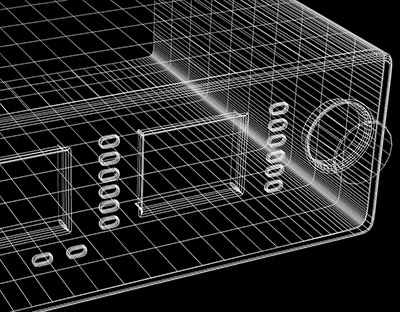3D Printed Circuit Boards has revolutionised the printed circuit board (PCB) industry. Firstly, it has enabled PCBs to be manufactured at a fraction of the cost compared to traditional methods. Secondly, it has improved operational efficiency in businesses as it saves resources, time and manpower. The most important feature is that additive manufacturing (also known as 3D Printing), has allowed PCB manufacturers to create ideas for prototypes and reduce time to market for new products.
Benefits of Additive Manufacturing / 3D Printing
- Decrease in waste: Allows companies to only use the materials they need to create products. The efficiency of this newer approach decreases waste.
- Reduced time: 3D printing minimises the number of steps required to work raw materials into finished products, which accelerates the process.
- Better quality: While manual work is subject to the individual ability of the person performing it. The accuracy of printing goods with machines is both higher and repeatable, leading to greater levels of quality.
Advantages of 3D Printed Circuit Boards
The gains from creating PCBs with 3D techniques are considerable. Largely due to the improved productivity this method enables, organisations can consistently:
- Save costs: When PCBs were crafted from flat boards, creating them involved a resource-intensive, expensive series of procedures that was frequently outsourced. The quickness with which additive manufacturing produces these boards allows companies to perform this work in house, retain all of its intellectual processing and minimise expenses while doing so.
- Improve products: Vendors can make multilayer circuit boards with these additive techniques. You can leverage these double boards to match the shape of any product, which is key for satisfying customers.
- Customisation is now affordable: These 3D Printing tools let manufacturers customise the type of boards they craft. Therefore, it ultimately fulfils the requirements of any particular customer. Without them, personalising products for consumers would require a lengthy redesign period that is impractical.
Prototyping gains
Devising prototypes of new designs is usually a painfully slow process. Additive manufacturing eliminates this bottleneck. However, it leads to the next question….
Is the prototype going to work?
Whilst a designer can quickly implement changes or put forward new ideas to existing designs. At this stage of development, it is critical to conserve expenses and know that what you’re about to manufacture is going to operate correctly. The only way to move forward is to implement a testing routine using modern tools to ensure the PCBs are going to work, before they are actually printed.
Testing 3D Printed Circuit Boards in house
This is where Huntron’s products come into play. Huntron are at the forefront of this sector. They provide test and diagnostic solutions for electronic PCB’s and have been doing so since 1976. Huntron’s power-off troubleshooting tools help identify component failures on printed circuit boards. Also their open architecture Access Robotic Probers provide full automation to your power off or power on test processes. The advantages of these Test Solutions are:
- You keep the intellectual property inside your business
- Reduce expensive third party testing prototyping costs
- Reduce time to market providing you a competitive edge.
3D printing is an effective means of increasing productivity, decreasing expenditures and meeting customer demands for PCBs. It is modernising this aspect of the electronics industry to meet the contemporary pace of business. If you craft these boards and are not using this method yet, do not be surprised if your competitors are.
In conclusion, by pairing 3D Printed Circuit Boards with modern methods for automating the testing of PCBs, organisations get the best of both worlds to boost their productivity and revenues from making these products.
Metromatics has been Huntron’s Partner in Australia and New Zealand since 1989. We provide local sales, service and support for the Huntron product range. Contact us, to find out how a Huntron System can assist your 3D Printed Circuit Board Testing Process.
